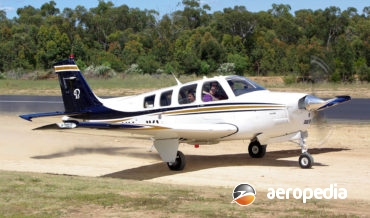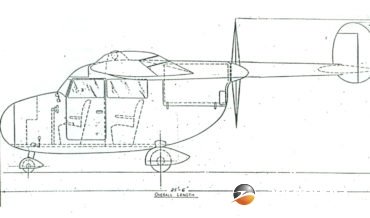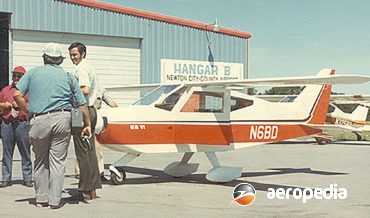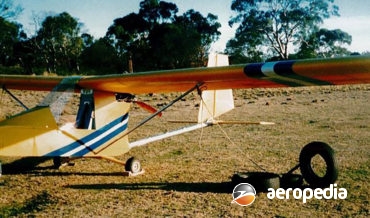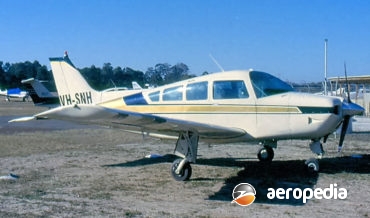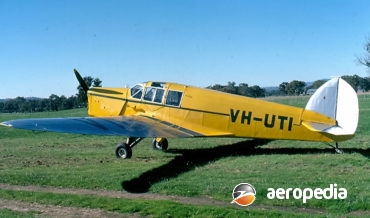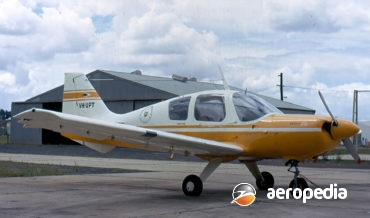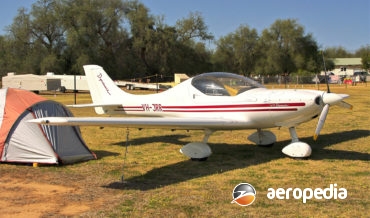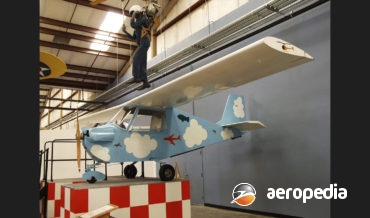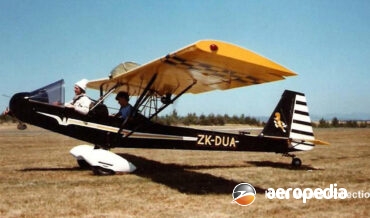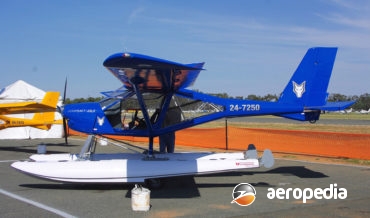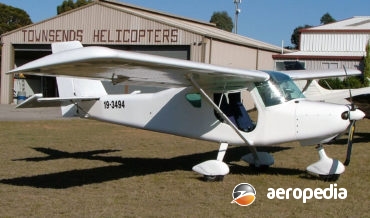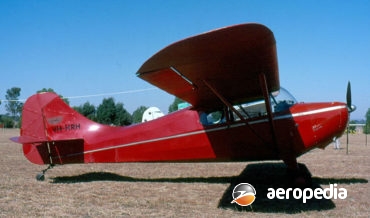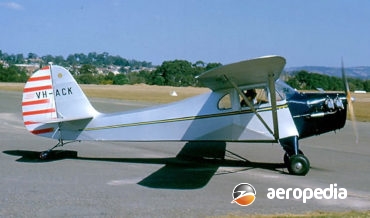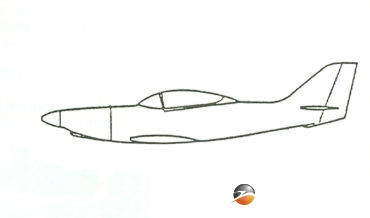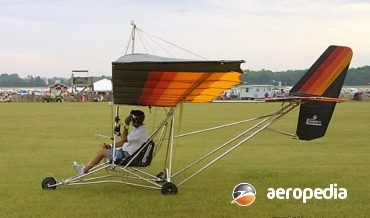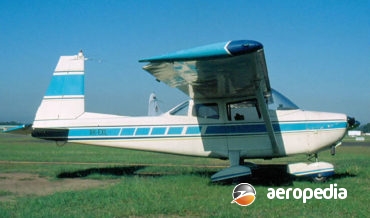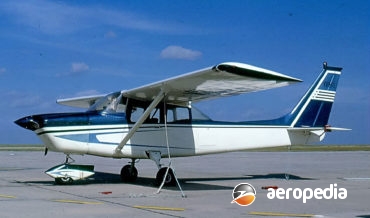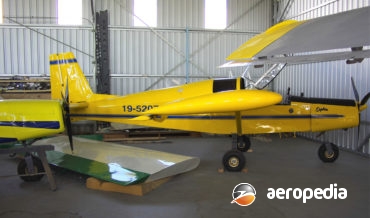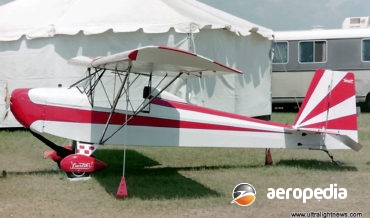All Contents
Contents
The Bearhawk Patrol is a development of the R & B Bearhawk light utility aircraft which was initially produced in plan form for the amateur aircraft market and is now one of three aircraft in the series which was initially designed by Robert Barrow.
David C. Eyre
- May 8, 2019
The A36 series was a development of the V35 ‘V’-tail series built with a conventional tail unit and with swept-back vertical tail surfaces, an extended cabin, and was first conceived in 1968.
David C. Eyre
- May 8, 2019
This was a light aircraft which emanated from the Beaufort Division of the Department of Aircraft Production in October 1945 and, known as the EC-1, was a proposal for the design and production of a four-seat light aircraft using knowledge gained during the production of the Bristol Beaufort bomber during
David C. Eyre
- May 8, 2019
James R Bede, the well-known light aircraft designed in the USA, formed Bede Aircraft Inc at Newton, Kansas to undertake the design and production of plans and kits of a variety of aircraft for amateur construction.
David C. Eyre
- May 8, 2019
The BD-5 series was the subject over the years of much development due to the difficult constructors were having in locating a suitable engine.
David C. Eyre
- May 8, 2019
The Bede BD-6 is a single-seat scaled-down development of the popular BD-4 series of light amateur built aircraft designed in the United States. Introduced to the range in 1975 the series is built and marketed by Bedecorp of Medina, Ohio and is of all-metal construction and is supplied in kit
David C. Eyre
- May 8, 2019
Gordon Bedson was born on 23 September 1918 in the Channel Islands and commenced employment with the Miles Aircraft Company in 1936.
David C. Eyre
- May 8, 2019
The Honey Bee was a single-seat all-metal light aircraft designed by William Chana and Kenneth Coward, engineers with Convair in San Diego, in the 1970s. The first example was flown for the first time on 12 July 1952.
David C. Eyre
- May 8, 2019
The prototype of the Beechcraft 23 series was flown for the first time on 23 October 1961 and, following certification, deliveries of production machines began during the following year.
David C. Eyre
- May 8, 2019
The prototype of the Musketeer series of light four-seat monoplanes was flown for the first time on 23 October 1961, and introduced to the Beechcraft range in 1962.
David C. Eyre
- May 8, 2019
The Eagle was designed as a high-performance low-wing cabin monoplane of wooden construction seating a pilot in front and two passengers side-by-side in the rear and was fitted with a manually-operated outward retractable undercarriage.
David C. Eyre
- May 8, 2019
The BA Swallow was developed by the British Klemm Aeroplane Co Ltd. (later British Aircraft Manufacturing Co.
David C. Eyre
- May 8, 2019
The company Backcountry Super Cubs produces what is basically a redesigned Super Cub and produced kits for amateur builders at its facility in Douglas, Wyoming.
David C. Eyre
- May 8, 2019
In the 1959-60 period a number of British Army Auster Mks 6, 7 and 10 were declared surplus to military requirements and, when released, were purchased by the manufacturers, Auster Aircraft. These aircraft were re-manufactured at Rearsby by Beagle [British Executive & General Aviation Ltd] in two models, the Model
David C. Eyre
- May 8, 2019
The Beagle A-109 Airedale was designed by the Beagle Aircraft Co to continue the line of light aircraft developed and produced in the United Kingdom by Auster Aircraft.
David C. Eyre
- May 8, 2019
The Pup was designed as a trainer and sporting aircraft to meet the needs of both the professional pilot training school, the flying club, and the private pilot.
David C. Eyre
- May 8, 2019
The Allison Aircraft Company of 4th and Perry Streets, Lawrance in Kansas was formed in 1920 and its main business was supplying aircraft parts and specialising in rebuilding Hi-lift wings for Curtiss JN-4 Jenny’s. It also built a number of light aircraft.
David C. Eyre
- May 8, 2019
The Dynamic is an advanced light-weight light aircraft seating two side-by-side. Conceived in 1996, series production commenced in 2000 and by 2005 more than 100 had been delivered to 19 countries.
David C. Eyre
- May 8, 2019
The Quail was designed by H L Woods of North Carolina in 1970, construction of the prototype commencing in the following year and it first flew in December 1971.
David C. Eyre
- May 8, 2019
Seating two persons in tandem in open cockpits, the Woody Pusher has a parasol wing and is a light aircraft aimed at the homebuilt market for sporting use.
David C. Eyre
- May 8, 2019
The A22 Foxbat is a quick-build aircraft kit produced in Russia aimed at the ultra-light market but which may also be registered in the normal category. By the end of 2001 more than fifty kits had been built and sold around the world, and the type has been certified in
David C. Eyre
- May 8, 2019
Agrocopetros LTDA was founded in Colombia in 1971 by Maximo Tedesco to design, manufacture and market ready to fly light aircraft in South America.
David C. Eyre
- May 8, 2019
The Comp Air 4, also known as the’Comp Monster” is one of a series of kit build aircraft produced by Aerocomp Inc of Merritt Island, Florida, which was formed in 1993 initially to build floats for seaplanes.
David C. Eyre
- May 8, 2019
The Pegasus is a composite light aircraft designed by Ivan Celso de Castilho in Brazil. The prototype first flew in 1992 and, after four years of testing, a production facility known as Aerodesign Desenvolvimentos Aeronauticos Ltd was set up to build the type, which became known as the Pegasus Silver
David C. Eyre
- May 8, 2019
he Aeronca Chief was introduced to the Aeronca Aircraft Corporation of Middleton, Ohio, range of aircraft in 1946 and was a development of the Model 7 Champion, varying mainly in having a wider fuselage to accommodate two persons side-by-side in lieu of in tandem.
David C. Eyre
- May 8, 2019
Developed from the Model K series, the Model 50-C, known as the Chief, was powered by a Continental A-50 four-cylinder horizontally-opposed air-cooled engine. It differed from the earlier model in having a wider fuselage, an increase in wing area and all up weight, and other details changes.
David C. Eyre
- May 8, 2019
The Aeronca series was produced by the Aeronautical Corporation of America at Lunken Airport in Cincinnati, Ohio. The prototype C-2 was flown for the first time in 1928 powered by the company’s own engine, the 19.3-kw (26-hp) Aeronca E-107A two-cylinder air-cooled unit. Produced in considerable quantity, this model had a
David C. Eyre
- May 8, 2019
The Aeronca K Scout series of light aircraft was a side-by-side two-seat light cabin monoplane introduced to the Aeronca range of aircraft in 1937. Powered by a 30-kw (40-hp) Aeronca E-113-CBD engine, it was subsequently produced in a number of models with a variety of power plants to meet customer
David C. Eyre
- May 8, 2019
The A-20 Vista is a light sporting high-wing monoplane built in the company’s facility in Kiev in the Ukraine in kit form and is a two-seats in tandem light aircraft with a strut-braced wing, the engine being in the pusher configuration behind the cockpit, and it has a conventional undercarriage.
David C. Eyre
- May 8, 2019
In the early 1980s a company known as Aero Composite of Bankstown, NSW announced through the magazine Airsport that it was proposing to build a “home-built: aircraft, the object being to produce the basic aircraft components as a kit of parts such that amateur builders could produce a high performance
David C. Eyre
- May 8, 2019
The Pulsar was produced by Aero Design Inc, of San Antonio Texas, and was a derivative of the company’s Star-lite which won the EAA Outstanding New Design Award in 1983. In more recent times the type has been marketed by SkyStar Aircraft Corp of Caldwell, Indiana as the Pulsar III.
David C. Eyre
- May 8, 2019
Aero Kros is a Polish company producing light aircraft for the European market and this machine was designed to comply with Federation Aeronautique Internationale microlight regulations and US light sport aircraft regulations.
David C. Eyre
- May 8, 2019
The Cobra was a high-wing, wire-braced ultra-light monoplane produced in the United States and marketed in Australia by Ultralight Flying Machines of North Balwyn, VIC,being able to meet ANO 95.10 regulations.
David C. Eyre
- May 8, 2019
The Super Aero 45 and Aero 145 were progressive developments of the Aero 45 light twin which flew for the first time in prototype form on 21 July 1947 in Czechoslovakia. It was the Country’s first post-war aviation product and was very successful.
David C. Eyre
- May 8, 2019
The AT-3 was designed and developed in Poland by Aero Sp of Warsaw as a light two-seat sporting aircraft of all metal construction. Derived from the Pottier P220 it can be fitted with variants of the Rotax 912 series of four-cylinder engines, or the Limbach L2400 series.
David C. Eyre
- May 8, 2019
This series of aircraft was developed by Volaircraft Corporation in the United States during the late 1950s. At first it was marketed as the Volair 10, receiving its type approval on 30 November 1961.
David C. Eyre
- May 8, 2019
As noted with the Darter Commander, in May 1968 a redesign of this series of aircraft took place and a new model known as the Model 100/180 Lark Commander was released onto the market.
David C. Eyre
- May 8, 2019
The Wasp GT was designed by Ole Hartmann and introduced to the Australian Aircraft Kits range of amateur-built light aircraft early in the 21st century, the kits being available to purchasers from the company’s facility at Laurieton, NSW.
David C. Eyre
- May 8, 2019
The J-3 Kitten was one of a series of light aircraft produced by AAW [Australian Aircraft Works] at Donvale, VIC, under licence from the Anglin Aircraft Company in the US, being a high-wing strut braced monoplane of conventional light aircraft appearance, the other designs being the J-4 Sportster, the J-5
David C. Eyre
- May 8, 2019
The J-4 Sportster was designed by Jessie Anglin in the United States and produced by the Anglin Aircraft Company, making its first flight in 1986.
David C. Eyre
- May 8, 2019
Recent Comments
Archives
Categories
- No categories
Categories
- No categories
Latest Posts
Newsletter


